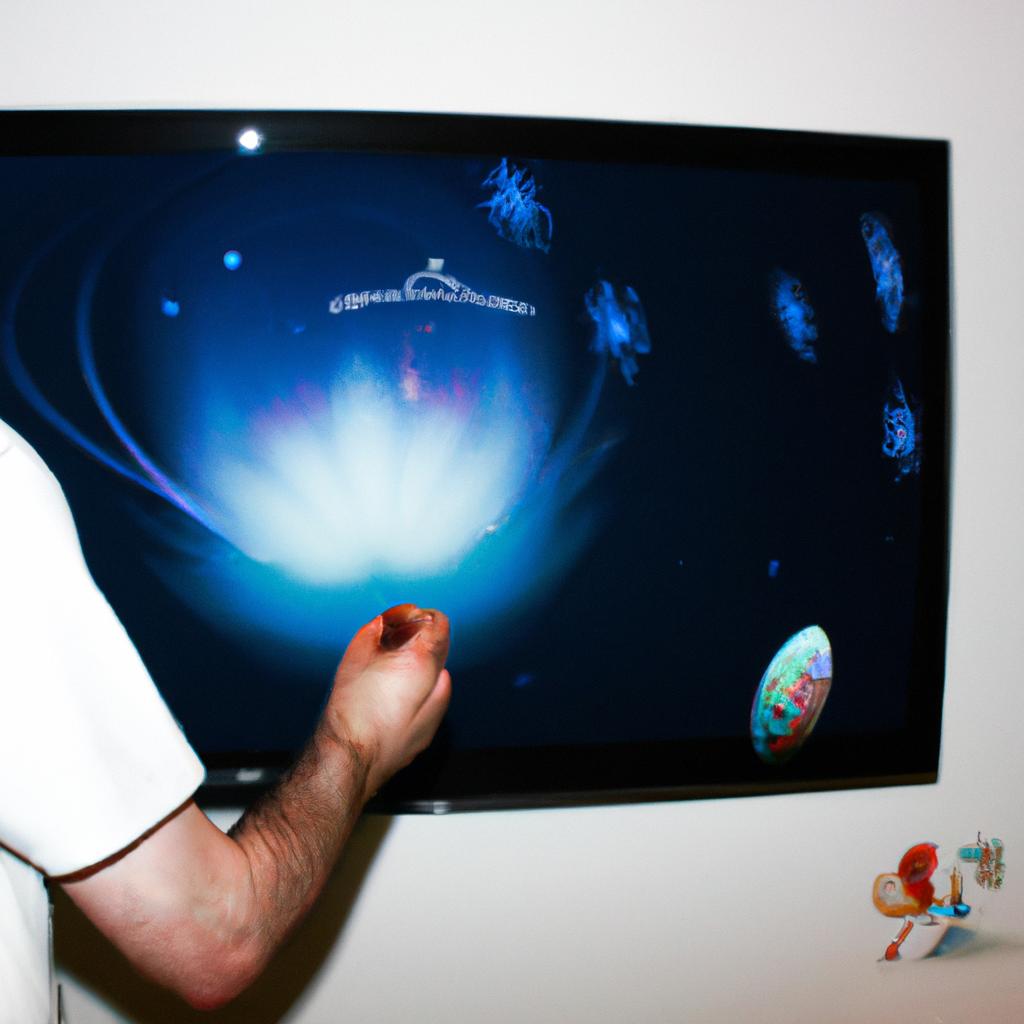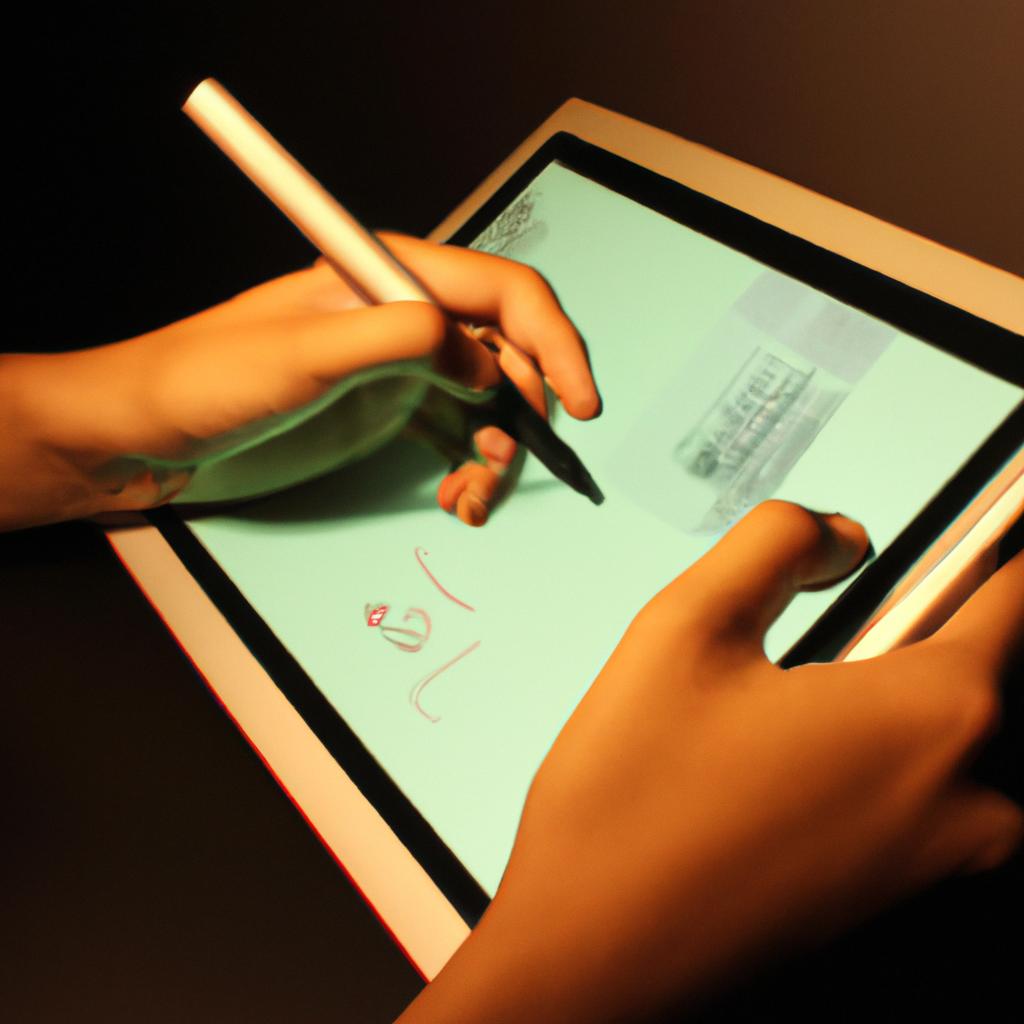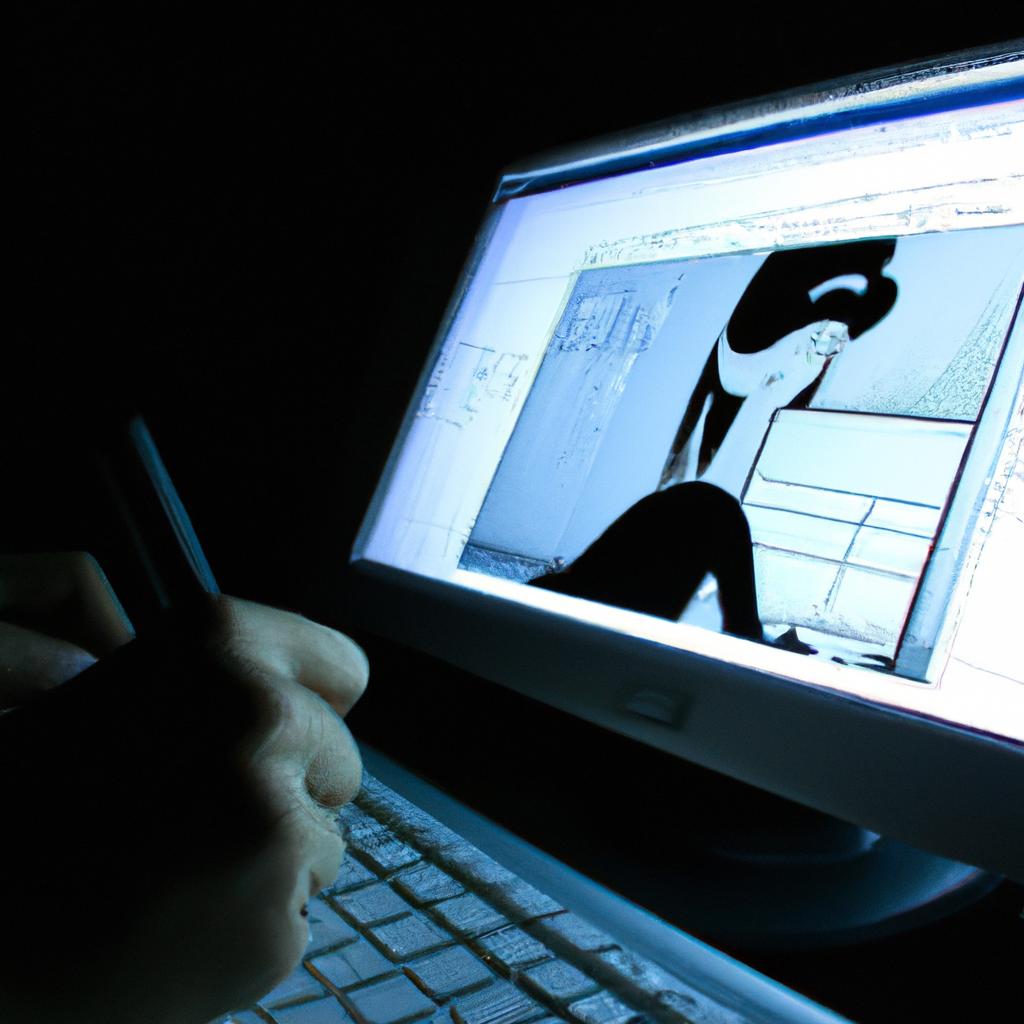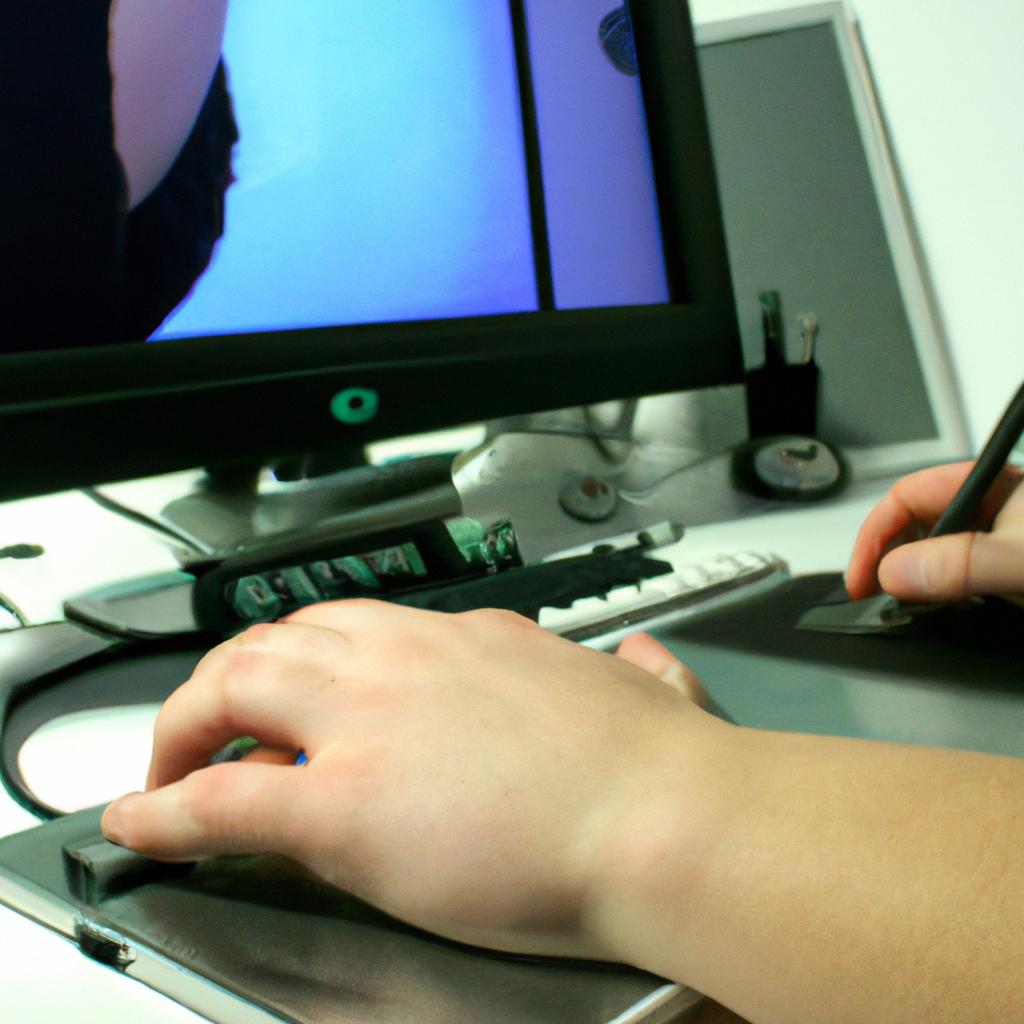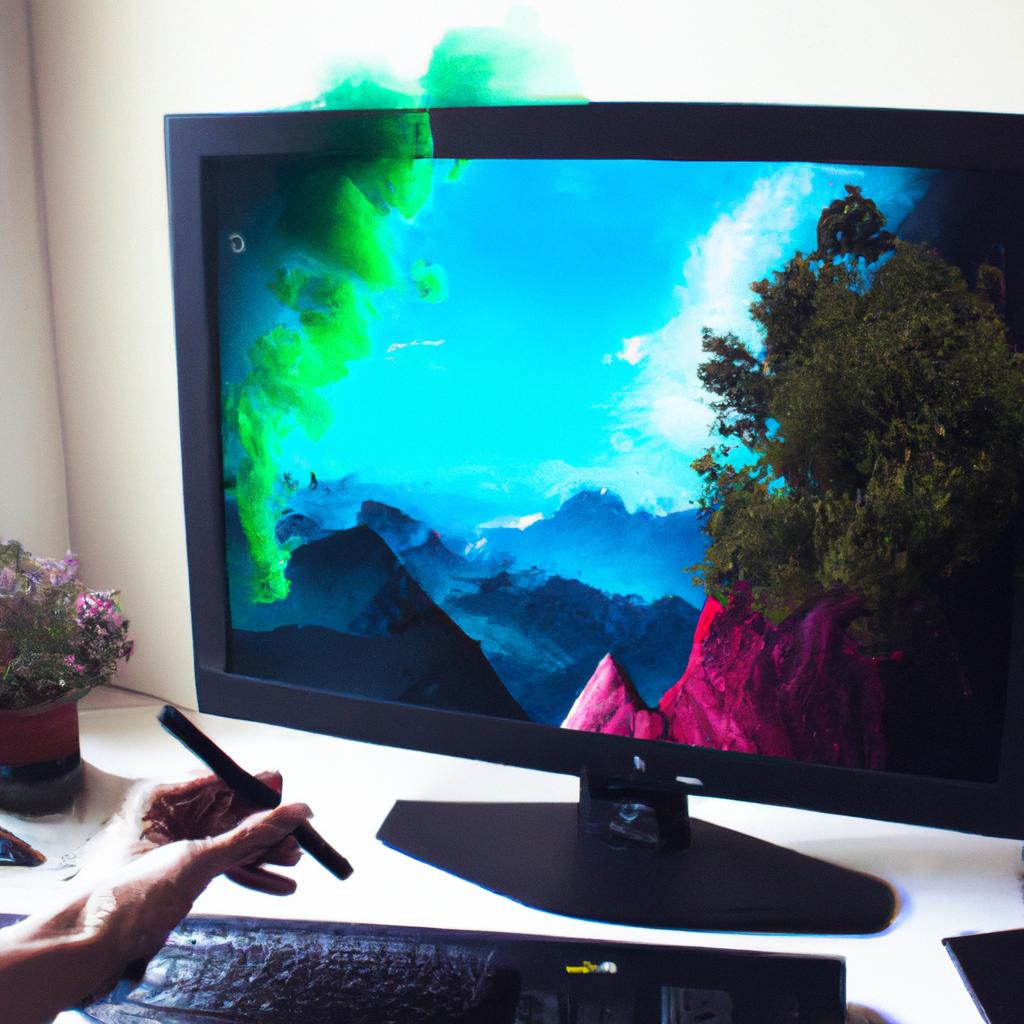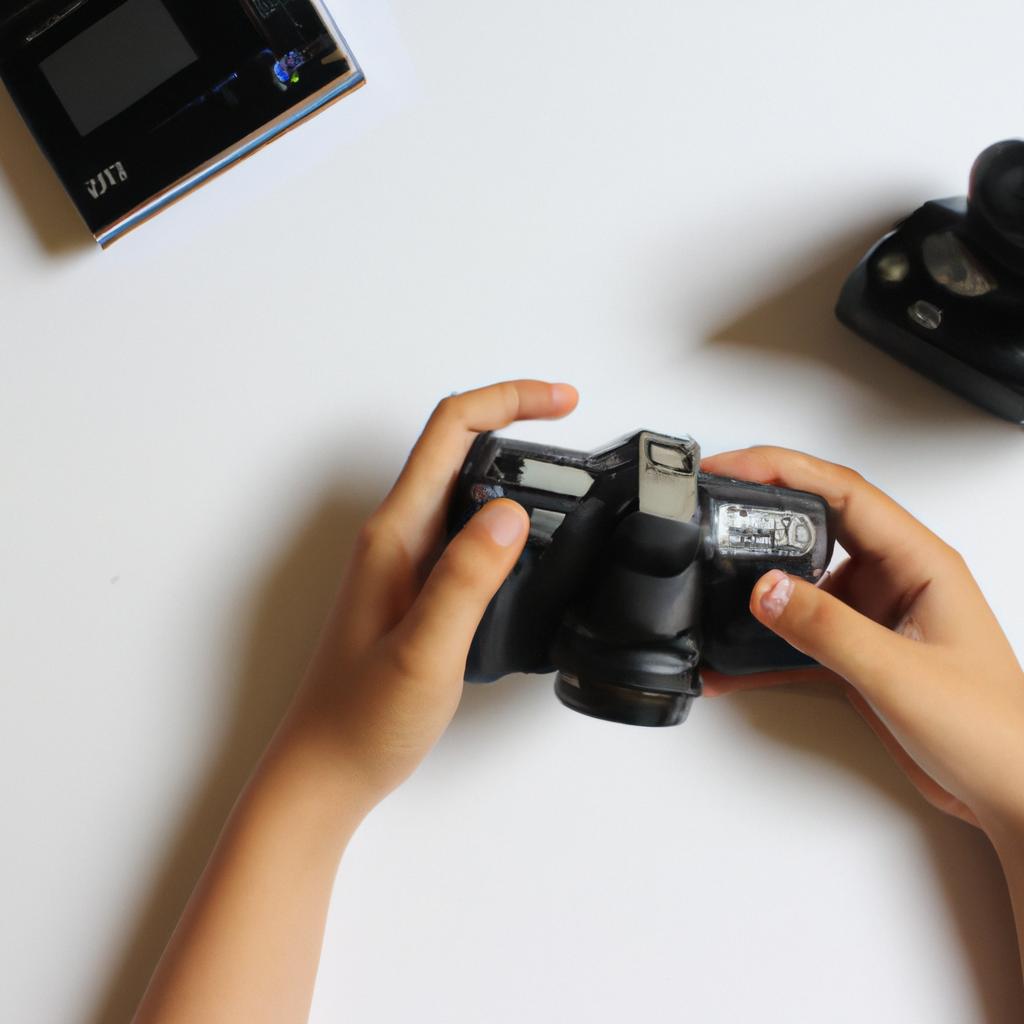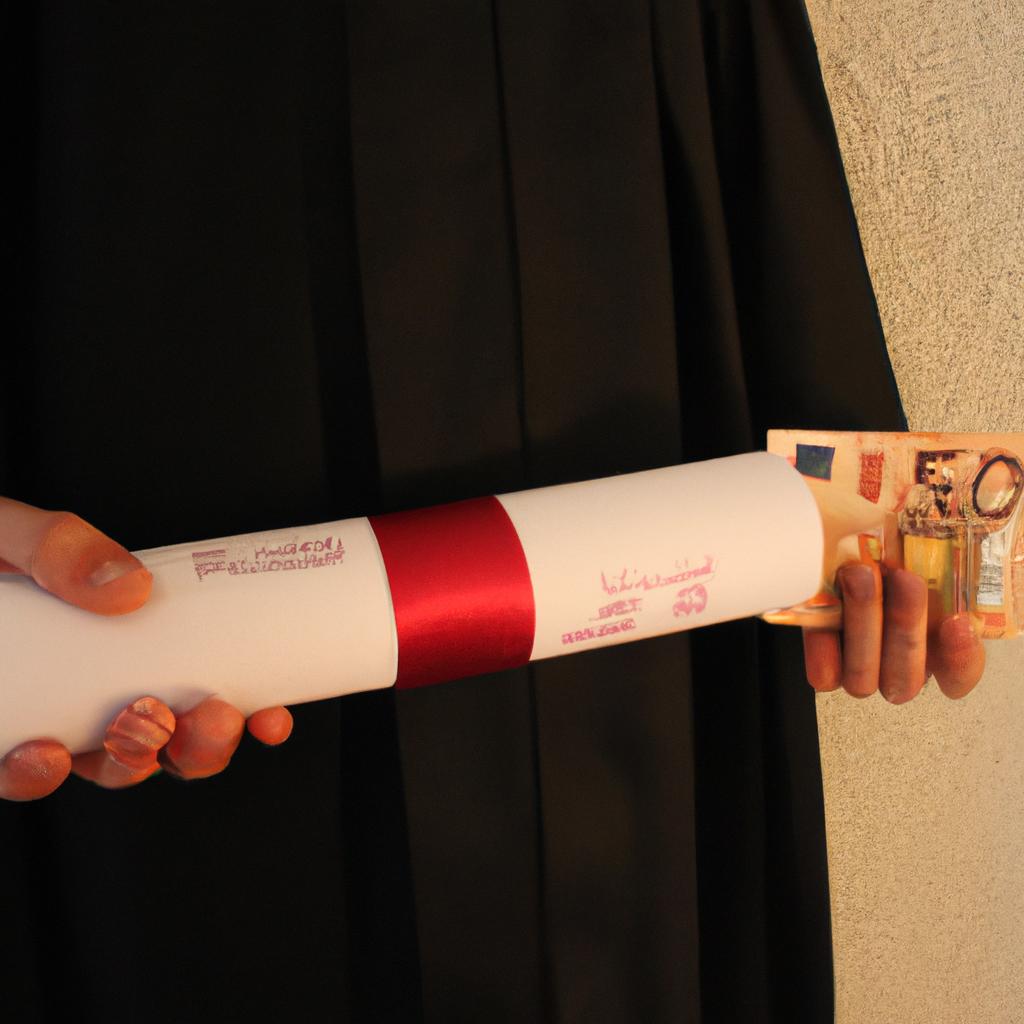The convergence of generative art and television has opened new possibilities in the realm of visual creativity, ushering in a digital frontier that challenges traditional notions of artistic production. Generative art, characterized by the use of algorithms and computational processes to generate artwork, presents an exciting avenue for exploring innovative forms of expression within the medium of television. From dynamic motion graphics to interactive installations, generative art offers a unique framework through which artists can engage with viewers on multiple levels.
To illustrate the potential impact of this fusion between generative art and television, consider the hypothetical scenario where a renowned artist creates a series of generatively generated animations specifically designed for television broadcasts. By harnessing algorithms that respond to real-time data feeds or viewer interactions, these animations could adapt dynamically, creating visually captivating experiences tailored to each individual viewer. This personalized approach not only enhances viewer engagement but also pushes the boundaries of what is possible within traditional broadcasting frameworks.
This article will delve into the various facets of generative art and its application in television. It will explore how generative algorithms can be used to create visually stunning motion graphics and effects that captivate audiences while examining the underlying principles driving such creations. Additionally, it will discuss how generative art can transform static televisual content into interactive experiences that engage viewers in new and immersive ways. One such example is the integration of generative art into live television broadcasts, where algorithms can analyze real-time data, such as social media trends or viewer responses, to generate dynamic visual elements that accompany the content being aired. This not only adds a layer of interactivity to the viewing experience but also allows for a more personalized and engaging connection between the audience and the broadcast.
Furthermore, generative art can be utilized to create interactive installations that enhance the televisual space. By employing sensors or cameras that capture viewer movements or gestures, artists can design installations that react and respond in real-time, generating visuals that evolve based on the audience’s interaction. This transformative approach turns passive viewers into active participants, blurring the line between art and audience.
Moreover, generative art opens up possibilities for exploring abstract concepts and pushing artistic boundaries within television programming. The use of algorithms enables artists to experiment with complex patterns, fractals, and intricate geometries that would be challenging to achieve through traditional means. These visually striking creations offer a departure from conventional aesthetics, inviting viewers into a world of mesmerizing imagery that challenges their perceptions.
In conclusion, the convergence of generative art and television represents an exciting frontier in visual creativity. Through its ability to generate dynamic visuals based on real-time data or viewer interactions, generative art enhances engagement and offers personalized experiences within traditional broadcasting frameworks. By transforming static content into interactive installations and exploring abstract concepts through algorithmic processes, this fusion expands the possibilities for artistic expression in the realm of television.
Generative Art: A New Era in Visual Creativity
Art has always been a reflection of the times, capturing the essence of human experiences and emotions. In recent years, with advancements in technology, a new form of artistic expression called generative art has emerged. Generative art refers to artworks that are created using algorithms or computer programming, where the artist sets certain parameters for the artwork to generate itself autonomously. This innovative approach allows artists to explore uncharted territories in visual creativity.
To illustrate the power and potential of generative art, let us consider an example of an interactive installation exhibited at a contemporary art gallery. The installation consists of multiple screens displaying constantly evolving abstract patterns and colors. As visitors move through the space, their movements are captured by sensors, which influence the development of these visuals in real-time. By integrating technology into the artistic process, this installation provides an immersive experience that blurs the boundaries between viewer and artwork.
The rise of generative art signifies a paradigm shift in traditional notions of authorship and creative control. It challenges our preconceived ideas about what it means to be an artist and highlights how collaboration between humans and machines can lead to exceptional outcomes. With generative art, artists have expanded their creative toolkit beyond conventional mediums like paintbrushes or cameras. They now utilize code as a medium for self-expression, allowing them to create dynamic and ever-changing works that would be impossible without technological intervention.
This transformative nature of generative art evokes various emotional responses among its audience:
- A sense of awe and wonderment as viewers witness intricate patterns unfold before their eyes.
- An appreciation for the fusion of technology and creativity that pushes artistic boundaries.
- Curiosity about how algorithms can shape aesthetic experiences.
- Contemplation on the role of human agency within this collaborative process.
Table 1 below presents some key characteristics that distinguish generative art from other forms:
| Characteristics | Description |
|---|---|
| Algorithmic creativity | The artwork is created through algorithmic processes, often with some level of randomness or generative rules. |
| Dynamic and interactive | Generative art can change over time or respond to external stimuli, creating an immersive experience for the audience. |
| Embracing unpredictability | Unlike traditional art forms that are static, generative art embraces the element of surprise and encourages exploration in its ever-evolving nature. |
| Blurring boundaries | It challenges conventional notions of authorship and invites collaboration between artists, machines, and viewers. |
In summary, generative art represents a new era in visual creativity by harnessing technology’s power to push artistic boundaries. Its ability to create dynamic and interactive artworks not only captivates audiences but also prompts contemplation on the evolving relationship between humans and machines in the creative process. As we delve further into this digital frontier, we will explore how technology has revolutionized artistic expression.
Next section: The Evolution of Artistic Expression through Technology…
The Evolution of Artistic Expression through Technology
Transitioning from the previous section exploring generative art as a new era in visual creativity, we now delve into the evolution of artistic expression through technology. To illustrate this progression, let us consider a hypothetical case study involving an artist named Sarah.
Sarah is a contemporary artist who embraces technology to create her artworks. She combines traditional painting techniques with digital tools and algorithms to generate unique compositions that blur the lines between human imagination and computer-generated patterns. By harnessing the power of generative algorithms, she can explore endless possibilities and push the boundaries of what is considered visually captivating.
The integration of technology has revolutionized artistic expression by offering artists like Sarah new avenues for creative exploration. Here are some key aspects exemplifying this evolution:
- Unlimited Iterations: With generative art, artists have access to infinite iterations and variations within their artwork. This ability allows them to experiment freely without constraints imposed by manual creation methods.
- Dynamic Interaction: Artists can engage with their audience in unprecedented ways through interactive generative installations or virtual reality experiences. These immersive encounters enable viewers to actively participate in the artistic process, fostering emotional connections and deeper engagement.
- Collaboration with Machines: The collaboration between humans and machines opens up exciting possibilities for co-creation. Generative algorithms provide artists with intelligent tools that respond dynamically to their input, leading to unexpected outcomes that challenge conventional notions of authorship.
- Exploration of Emergence: Generative art also facilitates exploration of emergent phenomena where complex patterns arise from simple rules or interactions. Through this approach, artists uncover intricate forms and structures that mirror natural systems, sparking wonder and awe among observers.
To further emphasize these points, consider Table 1 below which showcases how technological advancements have influenced different aspects of artistic expression:
| Aspects | Traditional Artistic Expression | Technologically Enhanced Artistic Expression |
|---|---|---|
| Mediums Used | Canvas, Paintbrushes | Digital software, Algorithms |
| Timeframe | Weeks or months to complete a piece | Real-time generation and manipulation of visual elements |
| Interaction with Audience | Static viewing experience | Interactive installations, virtual reality experiences |
| Iteration Limitations | Limited by physical materials and techniques | Infinite variations and exploratory possibilities |
With the continuous evolution of technology, artists like Sarah are at the forefront of exploring the intersection between generative art and television. In our subsequent section, we will delve into how these two creative realms converge to redefine visual storytelling in an increasingly digital world.
Table 1: Technological Influence on Artistic Expression
Transitioning into the next section about “Exploring the Intersection of Generative Art and Television,” we observe a fascinating interplay between these two distinct artistic domains.
Exploring the Intersection of Generative Art and Television
The Evolution of Artistic Expression through Technology has paved the way for new forms of visual creativity, particularly in the realm of generative art. As artists continue to push boundaries and explore possibilities within this digital frontier, one area that has seen significant exploration is the intersection between generative art and television.
To illustrate this point, consider a hypothetical scenario where a renowned artist collaborates with a major television network to create a dynamic visual experience for viewers. By utilizing generative algorithms, the artist is able to generate ever-evolving visuals that respond to live events happening on screen. For instance, during a news broadcast, the algorithm could analyze incoming data such as trending topics or viewer sentiment and translate it into visually captivating patterns and shapes displayed alongside the main content.
This convergence of generative art and television opens up exciting opportunities for creative expression while also enhancing the viewing experience. Here are some key aspects worth exploring:
- Dynamic Visuals: Generative algorithms allow for real-time generation of visuals, giving broadcasters the ability to deliver truly immersive experiences by incorporating constantly evolving graphics into their programming.
- Personalization: Through sophisticated algorithms, viewers can have personalized visual experiences based on their preferences or even biometric data such as heart rate or facial expressions.
- Interactive Engagement: The integration of interactive elements enables audiences to actively participate in shaping the visuals they see on screen, fostering engagement beyond passive consumption.
- Cross-Media Integration: With modern technology allowing seamless connectivity across devices, there is potential for generative art created for television broadcasts to extend its reach onto other platforms like mobile applications or virtual reality environments.
In summary, the synergy between generative art and television holds immense potential in revolutionizing how we perceive and engage with visual media. By leveraging advanced algorithms and embracing interactivity, broadcasters can provide viewers with captivating and customized experiences that go beyond traditional static imagery.
Transitioning into our next section about “Unleashing the Potential of Algorithms in Visual Creation,” we delve deeper into how generative art can harness algorithms to unlock new realms of artistic expression.
Unleashing the Potential of Algorithms in Visual Creation
The intersection of generative art and television opens up new possibilities for visual creativity, pushing the boundaries of traditional artistic expression. This section delves deeper into this dynamic relationship, showcasing how algorithms are revolutionizing the world of visual creation.
One compelling example that demonstrates the synergy between generative art and television is the use of real-time data visualization during live broadcasts. Imagine a news anchor reporting on stock market trends while visually presenting real-time graphs and charts generated by an algorithm. This not only enhances viewer engagement but also provides a more immersive and informative experience. By leveraging generative art techniques, broadcasters can transform mundane statistical information into captivating visuals that captivate audiences.
To further illustrate the impact of generative art in television, we can examine its role in enhancing special effects and computer-generated imagery (CGI). Traditionally, creating stunning visuals for movies or TV shows required extensive manual labor and meticulous attention to detail. However, with advancements in algorithms and generative art techniques, complex scenes involving explosions, natural disasters, or fantastical creatures can now be rendered effortlessly. The integration of these technologies allows filmmakers to bring their creative visions to life with greater ease and efficiency.
In addition to transforming live broadcasts and CGI production, here are some key ways in which generative art is reshaping the landscape of visual creativity within the television industry:
- Enhanced audience immersion: With generative art-driven virtual reality experiences becoming increasingly prevalent in television content, viewers can immerse themselves fully within fictional worlds.
- Customized storytelling: Generative algorithms enable personalized narratives tailored specifically to individual viewers based on their preferences and interests.
- Augmented reality overlays: By overlaying digital elements onto real-world settings through augmented reality technology, generative art enriches televised experiences by blending physical environments with imaginative enhancements.
- Interactive advertisements: Through interactive commercials powered by generative algorithms, advertisers can engage viewers on a deeper level, offering personalized and dynamic content that resonates with their target audience.
| Enhanced Audience Immersion | Customized Storytelling | Augmented Reality Overlays | |
|---|---|---|---|
| Impact | Fully immerses viewers in fictional worlds. | Tailors narratives to individual preferences. | Blends physical environments with digital enhancements. |
| Benefit | Engages viewers on a deeper level, creating unforgettable experiences. | Enhances viewer engagement by catering to personal interests. | Transforms televised settings into interactive and imaginative spaces. |
As generative art continues to push the boundaries of visual creativity within television, it is crucial to understand its impact on the industry as a whole. The subsequent section will analyze how this fusion influences storytelling techniques, production processes, and audience reception, highlighting the transformative power of generative art in shaping the future of television.
The Impact of Generative Art on the Television Industry
The integration of algorithms into visual creation has opened up new possibilities for artists and designers to explore. By leveraging the power of computational processes, generative art has emerged as a revolutionary approach that challenges traditional notions of creativity. One such example is the work of artist Anna Johnson, who utilizes algorithmic systems to generate intricate patterns and designs that are then translated onto various mediums.
Generative art allows for an unprecedented level of complexity and variation in visual outputs. With algorithms at play, artists can create dynamic compositions that evolve over time or respond to external stimuli. This ability to adapt and change makes generative art particularly suited for applications in television production. For instance, imagine a show where each frame is generated in real-time based on viewer input or environmental factors, resulting in a unique viewing experience with every episode.
The impact of generative art on the television industry cannot be underestimated. Here are some key points highlighting its influence:
- Enhanced audience engagement: Generative art introduces an interactive element into television content, fostering deeper connections between viewers and the narrative.
- Novel storytelling techniques: Through algorithmic generation, plots and characters can be dynamically shaped during live broadcasts or streaming sessions, providing unexpected twists and turns.
- Personalized viewing experiences: Algorithms can tailor visuals to individual preferences by incorporating user data, creating a more immersive and customized journey for each viewer.
- Collaborative creativity: Generative art encourages collaboration between artists, programmers, and producers to push boundaries and collectively shape innovative narratives.
To further illustrate this potential impact, consider the following table showcasing different aspects enabled by generative art in television production:
| Aspects | Description | Example |
|---|---|---|
| Real-time adaptation | The ability to modify visual elements on-the-fly based on contextual cues | A news ticker displaying relevant information based on current events |
| Dynamic character design | Characters whose appearances evolve throughout a series based on their experiences or interactions | A protagonist whose physical appearance changes in response to emotional states |
| Interactive storytelling | The integration of viewer input into the narrative, allowing for branching storylines and multiple outcomes | An audience voting system that determines a character’s fate in a reality TV show |
| Data-driven visualizations | Translating complex data sets into visually engaging representations through generative algorithms | Visualizing stock market fluctuations using dynamic charts with animated patterns |
In summary, the fusion of generative art and television holds great promise for revolutionizing visual creativity. By harnessing the power of algorithms, artists can create immersive and personalized experiences that captivate audiences like never before. However, as this digital frontier continues to evolve, there are both challenges and opportunities that lie ahead. Transitioning into the subsequent section, we will explore these intricacies and delve deeper into the potential hurdles faced by artists navigating this new landscape of visual creation.
Challenges and Opportunities in the Digital Frontier of Visual Creativity
The impact of generative art on the television industry has been undeniable, transforming traditional visual storytelling and pushing creative boundaries. Now, let us delve deeper into the challenges and opportunities that arise in this digital frontier of visual creativity.
One fascinating example is the use of generative art in creating dynamic title sequences for television shows. By employing algorithms to generate intricate patterns and animations, these title sequences captivate viewers from the onset, setting a unique tone for each episode. For instance, imagine a crime drama series where the opening titles dynamically morph between various abstract shapes representing different aspects of criminal investigation – an eye symbolizing surveillance, puzzle pieces signifying puzzles yet to be solved, or a fingerprint illustrating forensic analysis. This integration of generative art not only engages audiences but also enhances their viewing experience.
To fully comprehend the potential benefits and drawbacks of embracing generative art in television production, it is important to consider several key factors:
- Flexibility: Generative art allows for infinite variations and permutations, enabling creators to easily adapt visuals based on evolving narratives or thematic changes.
- Efficiency: With algorithms generating visuals automatically, there is potential for streamlining production processes by reducing manual labor required for designing individual frames.
- Originality: The uniqueness inherent in generative art can help distinguish one show from another by offering visually distinct branding elements.
- Audience Reception: While some viewers embrace innovation and appreciate fresh approaches to visual storytelling, others may resist change due to established expectations or nostalgia associated with traditional techniques.
| Pros | Cons |
|---|---|
| Enhanced creativity | Resistance from purists |
| Streamlined process | Learning curve |
| Unique brand identity | Technical limitations |
| Engaging audience | Compatibility issues |
In this rapidly advancing digital landscape, incorporating generative art poses both exciting prospects and significant challenges for content creators. By embracing the potential of generative art, television producers can elevate storytelling to new heights, captivating audiences with visually stunning and immersive experiences.
Note: While further exploration is necessary to fully grasp the implications of this digital frontier, it is evident that generative art holds immense promise for revolutionizing visual creativity in the television industry.

